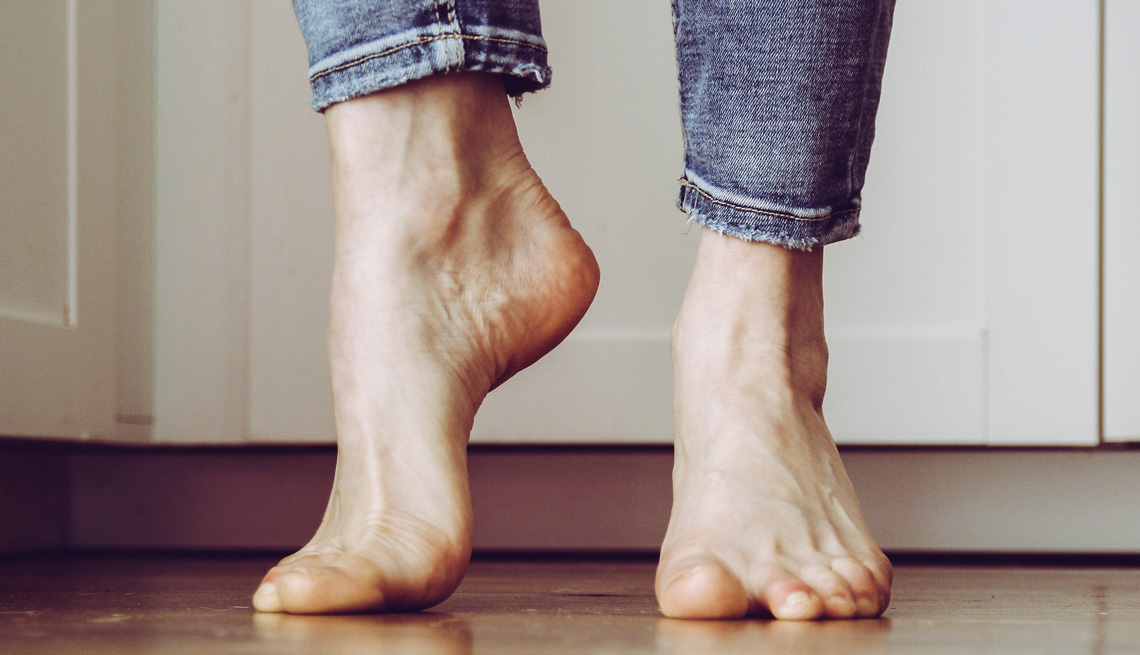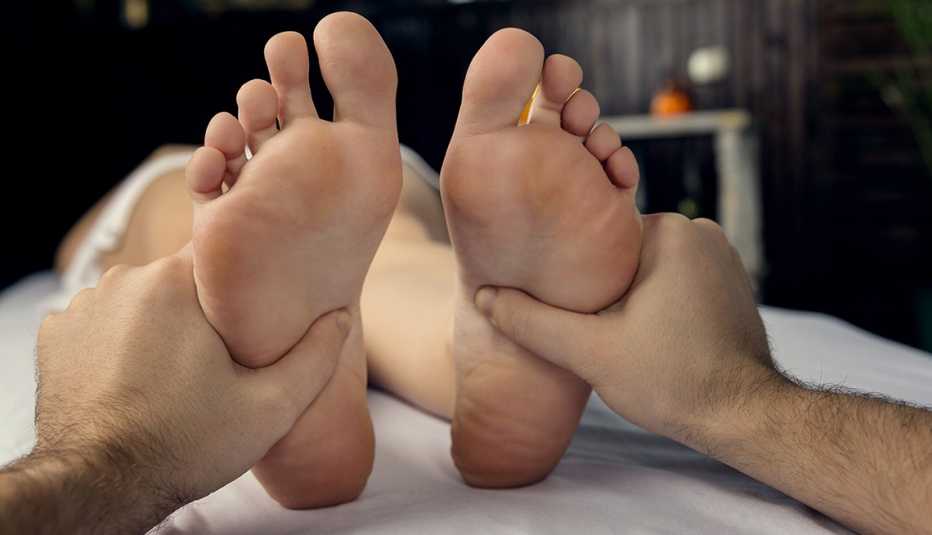Staying Fit
With every step, your feet take a pounding equivalent to up to 2.5 times your body weight. After decades of wear and tear, it’s no wonder foot woes start to crop up in your 50s. “Age plus weight plus inappropriate footwear plus genetics equals foot trouble,” says Eric Stamps, dean of the California School of Podiatric Medicine at Samuel Merritt University.
For most foot ailments, starting with an over-the-counter fix is usually OK, Stamps says. (See a foot doctor if pain is severe or things don’t get better in a week, or if the ailment interferes with your daily activities.)


AARP Membership— $12 for your first year when you sign up for Automatic Renewal
Get instant access to members-only products and hundreds of discounts, a free second membership, and a subscription to AARP the Magazine.
Here are seven common foot problems and the best (and worst) ways to treat them.
1. Collapsing arches
Symptoms: Pain or swelling along your instep. May worsen with activity.
Causes: Age-related inflammation and breakdown of the tendon that holds up your arches — the way cables support a bridge. Arch collapse is accelerated by extra pounds, high-impact activity, a history of foot and ankle injuries and low arches.
What You Shouldn’t Do: Stuff soft, squishy insoles or arch supports in your shoes. Pillowy softness won’t hold up sagging arches, says Laura Virtue-Delayo, president of the Pennsylvania Podiatric Medicine Association.
What You Should Do: Get firm arch support — either built into shoes or added as an orthotic.
2. Bunions
Symptoms: Pain, swelling and a bulging, bony bump at the base of your big toe. Your big toe angles inward and may overlap your second toe.
Causes: Blame inherited faulty foot mechanics, coupled with decades of wear and tear. Wearing tight, pointy shoes that squash your toes and forefoot makes things worse.
What You Shouldn’t Do: Believe a bunion splint or toe spacers will permanently straighten a crooked big toe.
What You Should Do: Wear shoes with a wide, deep toe box that makes plenty of room for the widest part of your foot.







































































